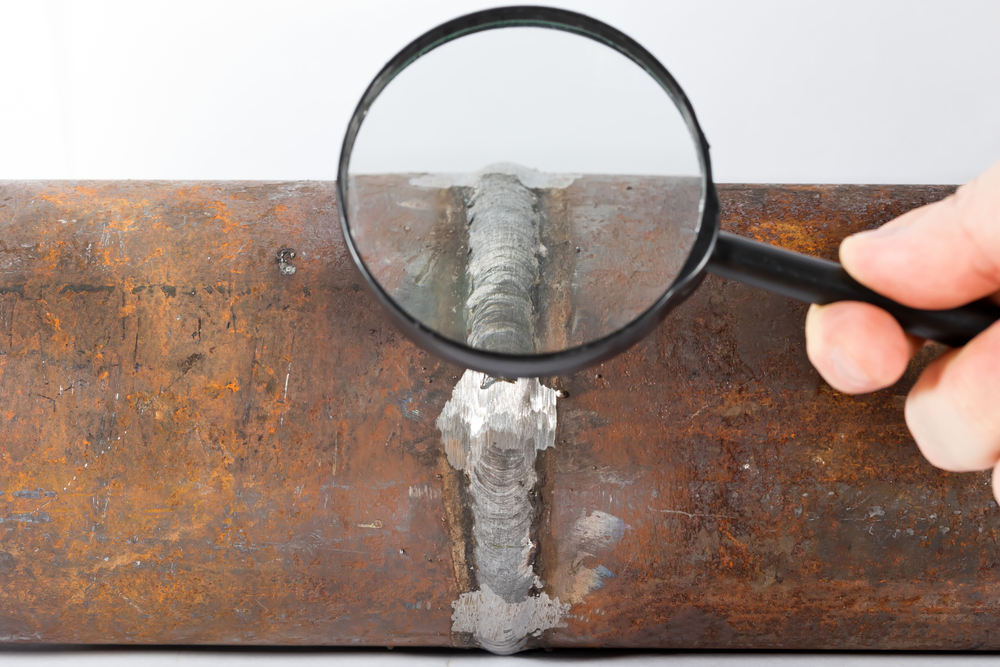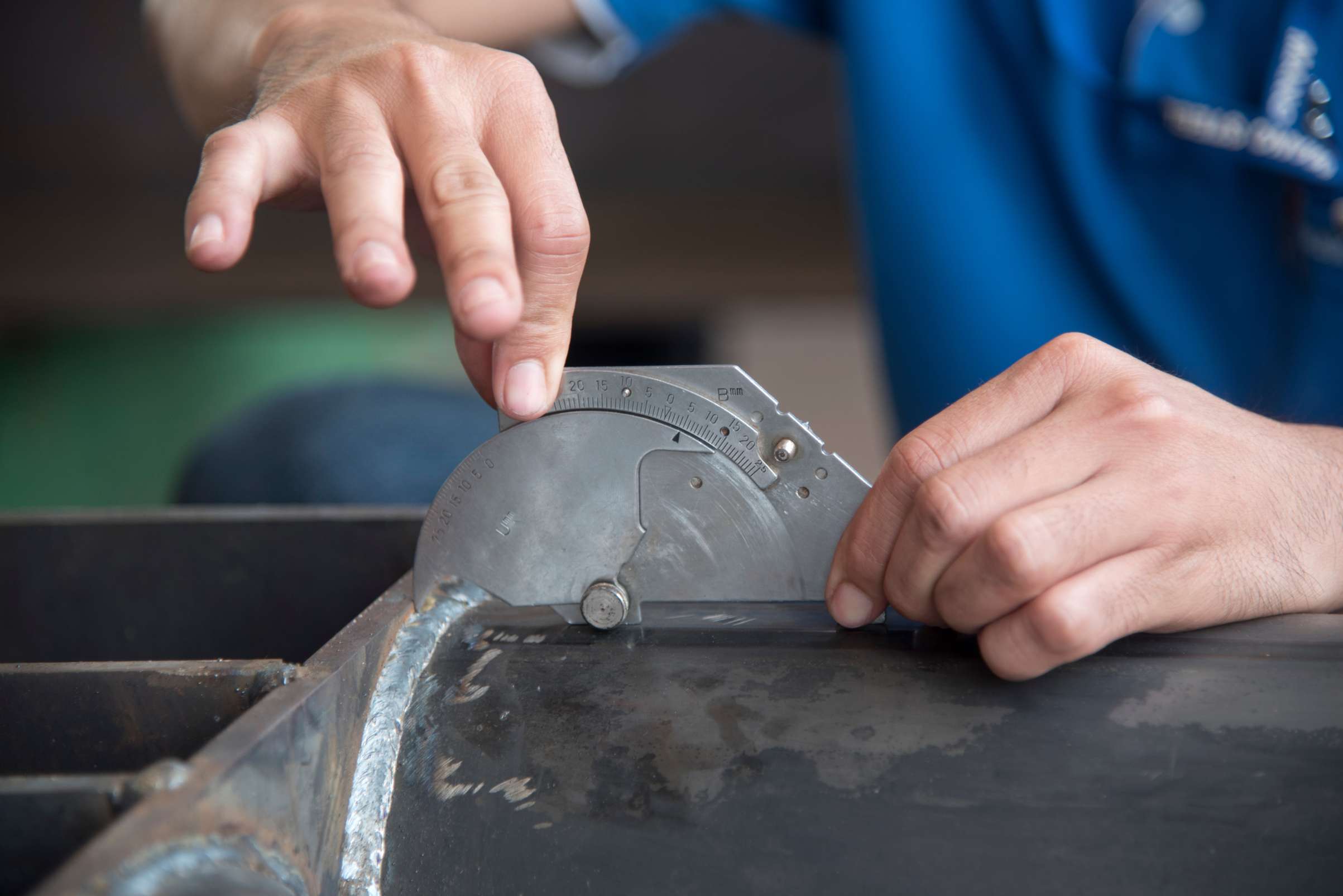Comprehensive Guide to Pipeline Welding Assessment: Ensuring Honesty and Security in Pipe Building And Construction and Maintenance
The stability and safety and security of pipes are extremely important in today's infrastructure landscape, underscoring the essential role of welding inspection in pipe building and construction and upkeep. A thorough overview on this subject not only highlights the necessity of examining weld top quality yet likewise addresses the different assessment methods readily available, such as ultrasonic and radiographic screening. By comprehending typical issues and their effects, stakeholders can execute best practices that make certain conformity and long life. However, the intricacies entailed in welding inspection raise important concerns regarding market criteria and the advancing modern technologies that might redefine these techniques.

Value of Welding Assessment
Welding evaluation plays an essential role in guaranteeing the integrity and security of pipeline systems. It offers as a basic procedure that confirms the top quality and integrity of welded joints, which are frequently one of the most weak spots in pipeline building. With systematic assessment, assessors can identify potential defects such as cracks, porosity, and insufficient fusion, which might compromise the structural integrity of the pipe.
The significance of welding examination prolongs beyond plain conformity with industry standards; it additionally safeguards public wellness and the environment. Thorough examinations can boost the longevity of pipe systems, minimizing the demand for expensive repair services and downtime.
In addition to making certain safety and security and conformity, welding evaluation cultivates a culture of quality control within companies. By prioritizing evaluation throughout the welding process, business can build an online reputation for integrity and excellence, eventually bring about increased client confidence and organization possibilities (Pipeline Welding Inspection). Therefore, the relevance of welding assessment can not be overstated in the context of pipe construction and upkeep
Secret Welding Processes
Numerous welding procedures are used in pipe building and construction, each with its very own advantages and applications. Among one of the most widely made use of approaches are Shielded Steel Arc Welding (SMAW), Gas Tungsten Arc Welding (GTAW), and Gas Steel Arc Welding (GMAW) SMAW is preferred for its versatility and ability to perform well in numerous environmental conditions, making it ideal for field applications.
GTAW, frequently described as Tungsten Inert Gas (TIG) welding, is recognized for its capability to create high-grade welds with excellent control over heat input, making it perfect for thin-walled pipes and stainless steel products. GMAW, or Steel Inert Gas (MIG) welding, uses high deposition rates and is reliable for massive tasks, typically utilized in the fabrication of pipes in controlled settings.
Additionally, Immersed Arc Welding (SAW) is used for its deep penetration and high efficiency, especially in the construction of large-diameter pipelines. Each of these procedures adds to the total honesty and security of pipe buildings, allowing welders to select the most proper technique based on material kind, job needs, and ecological problems. Understanding these crucial welding procedures is essential for efficient pipeline welding evaluation.
Typical Flaws and Their Influence

Porosity, defined by little gas pockets trapped within the weld, deteriorates the material and can lead to leaks. Splits, which might happen due to thermal stresses or incorrect cooling, can circulate and result in structural failing under pressure. Undercutting, where the base steel is deteriorated along the weld bead, decreases the reliable cross-section of the pipe, boosting the danger of fracture.
Incomplete blend happens when the weld metal does not appropriately bond with the base steel, leading to weak locations that may stop working under stress and anxiety. Slag incorporation, the entrapment of non-metallic material within the weld, can also weaken the joint's stability. Determining and dealing with these defects early in the building and construction procedure is important to making sure the lasting dependability and safety of pipe systems, thus protecting both the atmosphere and the framework.
Evaluation Tools and methods

Aesthetic assessment is have a peek here the first line of defense, permitting assessors to identify surface area abnormalities, imbalance, or other noticeable problems. Ultrasonic testing uses high-frequency acoustic waves to spot interior problems, providing exact deepness dimensions and identifying defects without damaging the weld. Radiographic testing makes use of X-rays or gamma rays to generate pictures of the weld, enabling the identification of inner gaps, cracks, or incorporations.
Magnetic bit testing is particularly reliable for discovering surface area and near-surface stoppages in ferromagnetic materials. This method involves using an electromagnetic field and fine iron fragments to the weld, revealing issues via the accumulation of fragments at defect sites.
In enhancement to these methods, specialized tools such as automated ultrasonic testing equipment and electronic radiography systems boost assessment accuracy and performance, ensuring a comprehensive assessment of pipe welds throughout building and maintenance.
Best Practices for Compliance
Following finest practices for compliance in pipeline welding evaluation is critical for making certain the honesty and safety and security of the infrastructure. Organizations has to develop a comprehensive quality management system that lines up with market criteria such as ASME, API, and AWS. This consists of establishing thorough welding treatments that specify the certifications, strategies, and materials needed for welders.
Regular training and certification of evaluation workers are vital to preserve high competency levels. Examiners ought to be familiar with different non-destructive testing (NDT) methods, consisting of ultrasonic screening, radiographic testing, and visual examination, to properly recognize potential defects.
Documentation plays a crucial role in compliance; maintaining exact documents of evaluations, weld treatments, and employees credentials helps to guarantee traceability and responsibility. Scheduled audits and reviews of welding techniques must be performed to determine areas for improvement and ensure adherence to established protocols.

Conclusion
In conclusion, the execution of extensive welding inspection procedures is extremely important for ensuring the honesty and safety and security of pipe building and construction and upkeep. Constant renovation in assessment processes will certainly contribute to the durability and reliability of pipe systems, emphasizing the vital function of welding inspection in the industry.
The stability and safety and security of pipelines are paramount in today's facilities landscape, emphasizing the crucial role of welding why not check here evaluation in pipe building and construction and maintenance. Recognizing these crucial welding processes is necessary for effective pipeline welding assessment.
Adhering to best methods for conformity in pipe welding assessment is critical for making sure the integrity and safety and security of the infrastructure.In conclusion, the execution of strenuous welding assessment protocols is critical for making sure the stability and security of pipeline building and maintenance. Constant improvement in examination procedures will certainly add to the longevity and reliability of pipeline systems, emphasizing the crucial role of welding inspection in the market.